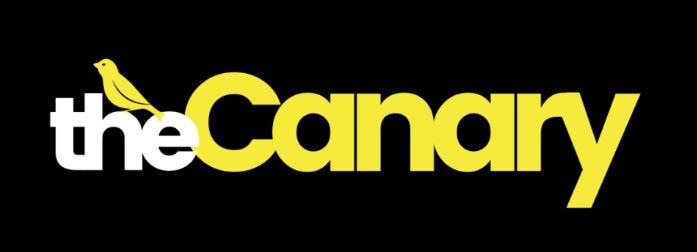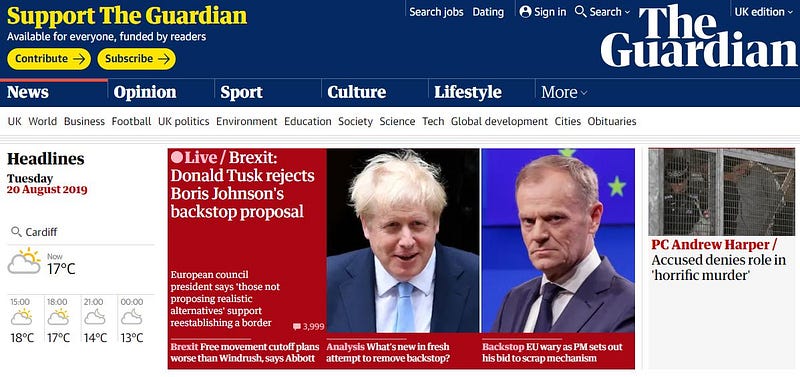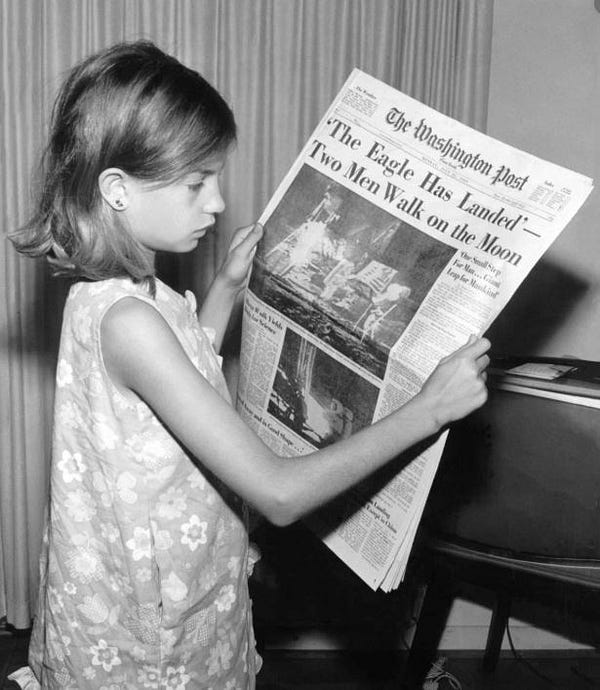How to secure young audiences and take established news brands into the future
Richard Beech, 30, has spent his career so far bending and breaking rules for some of the UK’s best and biggest digital startups, including BuzzFeed, JOE Media and DriveTribe.
He is now the director of The Ginger Agency, a marketing start-up working with the likes of News UK and Reach to help build audiences for the future.
He chats to Gavin Allen about the advice he wishes he’d received as a young journalist, how to build your brand on social media and the ‘one massive mistake’ The Guardian is making.

What advice do you wish you had been given when you started out as a reporter?

Richard Beech, director of The Ginger Agency
One thing I got wrong is that I tried to run before I could walk.
I got carried away with how easy it is to publish online. I got a fair few things wrong quite publicly and I wish I had been told to slow the pace down a bit. I was too eager get things done quickly.
I was willing to do whatever it took to get page views and clicks.
I wish someone had sat me down and said to me ‘You need to get to grips with the community and understand who you’re writing for and then serve that community.’
How, practically, can they do that?
If I went back 10 years to when I joined WalesOnline as a 21-year-old the first thing I would do is put together a Survey Monkey giving people in the area the chance to tell me what they thought was under-reported.
Get as many people as possible to fill it in. I’d also take that outside on a clipboard and ask real people. I feel dumb for not doing that the first time round.
I wish I’d taken more time to think about who I wanted to be as a brand. Think about what you want to write about. What issues do you care about?
Then find that audience and ask them questions. What do they think is under-represented? Spend time getting to know who you are writing for rather than just publishing loads of stuff and working out from page views what works best.
Also, I’ve moved around a lot in my career and it has worked out well for me but I wish I’d been quicker to go off and do something else when I wasn’t in the right environment for me.
I spent a lot of time trying to change things that were outside my control when people didn’t want to change them. Those publications weren’t the right place for me to try those new things.
Sometimes the only way to really get around that is to create your own environment. Start your own thing.
It’s easier than ever to start a blog or website now.
We’re in an era when it is easy to set up a blog like the Canary, which was overtly Corbyn-courting, very left-leaning and tried to discredit the mainstream media. That can pop up in an instant.
Why do you think it gained so much traction?

I think the reason it was so successful was because it didn’t sound like a bunch of journalists sitting in a newsroom being paid to write content. Perhaps it sounded slightly less professional but they were people who were passionate about what they were doing.
I think The Canary went too far with some aspects of this, and compromised any early integrity it built. But it was impressive to see it come from nowhere.
Now, I’m not saying that’s the route everyone should go down but sometimes trying to not sound like a journalist can be a good idea.
Does that apply to a reporter’s social media brand?
I’ve previously fallen into the trap of immediately sounding like all other journalists on Twitter. People think they have to revert to type.
That will alienate most of the people who want to read your content.
You are using social media to let people get closer to what you are doing. That’s the opportunity for the audience to see you not just as a journalist but as someone they can relate to.
So that need a slightly different approach to when you are filing copy. Be approachable and feel like you are part of a community. That’s what people value.
If you’re just moving to a new community — getting your first job — you’re already an outsider there. You need find a way to become an insider and I don’t think being one of these distant, objective, slightly wooden-sounding journalists on Twitter is the way to do that.
A lot of young journalists get a first job in a city or town. Their profile picture is of them in a suit and tie and they look very serious and they write every tweet like they are filing news copy. I don’t think that’s the way to connect with the audience on that medium. Try to be more relateable on social media. Make sure it is a two-way conversation and that you are starting a lot of those conversations, reaching out to people, putting the groundwork.
It’s hard for young journalists now though, they have to cope with a lot.
And I don’t think newsrooms are taking enough time to train them.
Quite often young journalists are thrown in at the deep end and not paid much money. They are churning out stories they might not necessarily want to be churning out just to pay their dues.

I don’t think there are any goals set out for them outside ‘get this number of clicks per day’. People are performance reviewed on things like how many people read their content. But that could be a 21-year-old newly-qualified journalist who is just there learning the ropes. Their copy still needs work. They have so much to learn on the job. But the only objective measure they are given of success is whether a certain number of people are reading their articles.
That isn’t helpful. It’s not going to help them develop as a journalist in terms of finding the right stories and telling them in the right way.
Are you in danger of conflating some online journalism with all journalism there?
Most people do end up online now and those things are blending into the same thing.
So telling the story in the right way is key to building your audience?
If you go to a print publication there is often up to a century of tradition and the tone of voice has been developed over time. It is relatively rigid and you can’t break out of that – for good reason. The brand is really well-established and you know what you’re playing with as a journalist, what kind of stories to look for and how you should tell them.
The problem when it comes to new brands online, or traditional brands trying to establish online presence, is that no-one ever sits back and thinks ‘This is the audience we are going after. This is how we should speak to that audience. This is what they are interested in. This is what our brand should be. This is what our mission should be’.
And most importantly: ‘This is what our tone of voice should be.’
These are the things I wish someone had taught me and I had thought about more carefully because if you don’t know what that tone of voice is and nobody else in the newsroom knows what it is then the audience definitely won’t know. Journalists don’t think about that stuff enough. We focus too much on each individual story. All of us we need to think more about the bigger picture and why we are doing it.
So engagement with the readership is key to building a sustainable audience?
If you’re a tourism board, success isn’t when someone drives through your village it’s when they stop and have a cup of tea.
It’s easy to launch a brand and try to get a million people reading each month — but who are they? Are they transient, just coming in once from Google and it’s only someone passing through? Are they just staying 30 seconds and then going away again. That’s not readership.
You see new projects launched and from the outside you can tell that the aim is to prove if it has legs – to see if you can get a certain number of people reading that thing. That approach doesn’t create longevity. It’s much harder, but better, to say: ‘Can we get half a million people who are 18–25 and probably vote Labour to read this thing?’.
Which traditional UK brand is doing the best job of managing the online transition?

I think the traditional brand in the UK doing the best job of avoiding that pitfall is The Guardian. They have also been smart with a soft-payall and they know what that audiences wants. But I think they are making one massive mistake with tone of voice.
Which is?
From the outside it seems to me that they are continuing to evolve their tone of voice to suit people who were 25–30 around 10 years ago and are now 35–40.
The problem with that is they are then alienating a lot of younger people. For example, the Guardian’s language on transgender will massively alienate anyone under the age of 25 who isn’t right wing. That’s a mistake because they will eventually lose authority as the left-leaning newspaper they have always been. I don’t think it quite feels particularly like a ‘woke’ publication; though I hate to use that term. It’s starting to feel a bit like when the BBC tries to speak to younger readers by doing something it thinks is cool.
Does language and tone of voice need to be permanently evolving to attract young readers?
If you are going to continue to sound like a newspaper then you are not going to attract people who haven’t grown up with a newspaper. It’s an alien concept to them.
But I do think the Guardian have done loads to try to get young people into news and they still have a bigger young audience than other legacy brands.
Does that mean there’s a demographic bump coming that’s worse than the loss of older readers who still buy newspapers?

A lot of people in newsrooms now don’t realise how different the mood is between 16–25-year-olds than it is among the 30–65s. There’s been a sea-change in the way young people see the world in the last five years. They seem much better educated, much more open minded — though there’s also worryingly a trend of people who are the opposite of that.
That’s the thing that might actually take newspapers out. The UK landscape feels stuffy and too fuddy duddy to me — and I’m only 30.
It’s so easy to launch a product in opposition to that and I think young people gravitate towards that sort of thing. The Overtake has done a great job of that. There’s an audience of left-leaning 25–35-year-olds who think it’s a great publication. That power to launch quickly, get the voice and brand right and bring the audience in, you don’t need financial backing for that anymore. You might need it to keep going and keep the lights eventually on but you don’t need loads of money to launch something new anymore. That’s what is dangerous for established publications like newspapers.
If you are a young journalist and you go into a newsroom and you think that newspaper is getting something wrong, something that your demographic is going to disagree with, you should be vocal about it and try and change that.
How fearful are you for the future of the UK’s legacy brands in news?
In 20–30 years time I think we’ll see a much broader range of journalism brands out there and they will be much more specialist.
It’s really easy for those brands which are continuing to do OK with the tactics they have used for decades to become irrelevant in the way record shops became irrelevant. But for many of them it is too late.

There is no young person who particularly cares about a particular newspaper brand. Young people will get their news from Apple News or whatever app is on their phone. Because that youth demographic has access to everything from a really young age with the internet, they learn very quickly what they like and want to read about. I think there will be pockets of interest that certain people gravitate towards rather than huge global corporations that cover everything.
I don’t see how you can have a loyal readership if you continue trying to appeal to as many people as possible. That’s what most of the big traditional brands are having to do because that’s the only way they can keep their staff on. They have to get as many clicks as possible. That’s the difficulty.
What did you lean on your Cardiff University Journalism course that equipped your for the future?
I was very lucky in my career to have been equipped with design skills at Cardiff. These things expand your skillset and raise your earning potential. These are things you don’t think are important when you just want to be the next great features writer.
But you’re not just a features writer now. The industry has changed so much that you now need to be a sub, a designer, know how to take a photo, frame a video — and marketing is one of those skills too.
In fact, if you are a features writer then you will probably be freelance with a big social media following and people will pay you to write for them because they want access to your following. So you need to know how to develop and carry that audience. You also need to be able to sell yourself to editors. You might as well start learning those things when you are 18 instead of waiting until you get to the newsroom to do it.
It’s not bad idea to know how to use Facebook Manager or Ads Manager, or put an ad on Twitter, or do SEO advertising. Learning the skills to be precise, to target specific audiences, well, that can’t be a bad thing.
It’s all an integral part of the game.
Richard Beech was previously Chief Strategy Office at Drive Tribe, Editor at Joe Media, a reporter at Buzzfeed and Deputy Social Media Editor at The Mirror. He studied at Cardiff University’s journalism school from 2007–2010.

